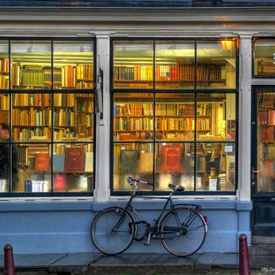So for this instalment, I had actually planned to write a post on setting the scene and how other SF plays have managed to do this, through slowly building or revealing this world to us through how the characters relate to things, explain things, and how they interact with each other. I have instead left that to the next one as I had a burning desire in me to say why it is that I chose to write SF Theatre.
Sure, I could’ve tried my hand at an SF Film – I could write about the outermost regions of space, aliens, rockets, time machines where a special effects team could sketch out the details for me (well, if I had a special effects team. I have friends and know people who are really good at this stuff, where it just goes over my head). I could write SF novels, where a special effects team could reside in my head and when I type the word fireworks, you would (hopefully) imagine them exploding in the sky.
So, here goes:
There’s something beautiful about the live nature of theatre, that makes you feel that you’ve trespassed or that you’ve been invited (both scenarios are fun). There’s an unravelling that feels different from other media – you’re dependent on the people you see in front of you, of what you can see, can hear; to show you where we are, what’s going on, what might happen. Because you’re stuck in this moment, it doesn’t feel so much like a sleuthing activity; if you’re constantly trying to figure out what’s going on, you’ve missed the trick and they’ve gone ahead, unlike a book where you can slow down or start again. Julia Walker talks about this oscillation between world and stage, character and actor; we experience these little shifts between what should be there and what is there. This dynamic engagement is what I love.
In film, there is distance. A safety net in watching a finished, polished product; where we can see these images, however frightening, thrilling or scary in the comfort of our seats, guzzling popcorn and other such treats. Every time we see a theatre production, it will be played differently. Seeing people there, in front of us, makes it feel much more real in a way that 3D film tries to emulate. Anyone who’s experienced the play The Woman in Black (1987 – 2005 based off the 1983 novel by Susan Hill) – the 1987 adaptation by Stephen Mallatratt , and felt her presence as she walks around the audience will know what I’m saying!
Imagine this with Science Fiction. Where the family consider slaughtering and eating the Occado delivery man or risk starvation in Pastoral (2013) by Thomas Eccleston, the tension felt palpable as we can feel their frustrations, their guilt, their fear into violating the basest of human laws. In Constellations (2012) by Nick Payne, the simple staging was no obstacle in portraying the multiverses inhabited by the two characters; their ability to reset and start again was seamless, focusing on the words and how they influence each change. The difference between R.U.R (1921) by Karel Capek on the stage and the subsequent TV adaptation can be proof of this choice of effect, as mentioned in Derek Johnston’s Experimental Moments: R.U.R and the Birth of British Television Science Fiction (2009):
The introduction of drama to the television schedules meant that, while the viewer may have been watching people performing somewhere else, they were also watching representations of something that was happening in a place and time other than the here-and-now of the performance space or the home.(251)
This can also be implied by the presentation of the robots themselves in both versions. The stage version emphasised the similarity between the humans and robots, whilst the Television programme highlighted the difference:
The 1938 television production featured metallic-garbed robots with squared-off shoulders and helmets, with pale, possibly metallic, faces and darkened lips, their make-up more pronounced than that of the human characters, while the stage production utilised essentially human-looking, if rubber-overalled, robots. This would be more in line with Čapek’s intentions that the robots be indistinguishable from humans, but the difference in presentation, whichever version did use more human-looking robots, does demonstrate that television producers did not feel obliged to reproduce stage successes but were free to adapt original texts as new productions specifically for television. (257)
Rather than showing robots, monsters and aliens as these huge external projections, Science Fiction Theatre manages for us to stage this as projections from within. In Override (2013) by Stacey Gregg, we are led into a remote cottage, a scene that would be anything other than futuristic. However, the mood changes when we find out that the character Violet has been enhanced internally and externally and the reveal of this to her partner, Mark, marks this change of intimacy and trust between them. We as audience members oscillate between her as a human and her as a cyborg, between character and actor, much like Mark does as the reveal happens to us and him at the same time. In this way, we can empathise with him and with her. The scene where she is reduced to a mechanic hub can be seen as darkly comic and poignant as Mark does his best to remain intimate with her. As she mentions, “would you love a toaster if it said it loved you?”
In my play A Christmas Gift (2012), I intended to create a similar false sense of security with the audience – as soon as Megan enters to find Adam decorating the tree on Christmas Day, there is no clue or hint as to his relationship with her, and only through the language itself (which is deliberately jarring to define human/robot) do we start to believe that something isn’t quite right:
MEGAN
I… do. I do. I do. I’m sorry but I do. I still love you.
ADAM
Why are you apologizing? It’s your love, not mine. Only you are responsible for it.
MEGAN
Hah… that sounds like you, alright.
ADAM
Glad to be of service.
We gradually discover that Adam has been dead for quite some time, and the corporation she has paid to have him “recreated” from his digital footprint and surveillance during the last days of his life has leased him for Christmas. Whilst she has written elaborate lists and planned everything to the last detail, she finds it more complicated and awkward than she had imagined to connect with him. Megan as well as the audience undergo this oscillation between character and actor (in her case, Adam her husband and Adam the robot). The ritualised actions of celebrating Christmas are also disseminated; being seen through a distancing lens as Megan tries to go through the motions with him as if he were her actual husband, with awkward results. The act of observing culturally and socially ingrained behaviours as something new is something we explored through rehearsal, such as regression exercises into childhood and the ways in which we would teach something outside of someone’s knowledge base, but with links that would help to portray the idea.
The way we consume technology now is mostly by means of assimilation; the use of cloud technology where all our uploaded technology waits upended and ready to be grabbed and used to the use of our smart phones that get smaller, thinner and more capable, lurking in our pockets like technological familiars. How many times do we double take when we see someone seemingly talking to themselves when they’re walking with a hands-free kit? This is reflected well in which we can portray Science Fiction on the stage; with thoughts still flying around about what may be the future. The first time I saw A Christmas Gift in the run-through confirmed why I wanted to write SF Theatre; as the awkwardness reaches a point where Megan realises that she cannot fully evoke the same response to Adam the robot as Adam the husband; and the arc from tension to acceptance on her face and her reactions/movement as she begins to enjoy what she has for the rest of the lease made me close to tearing up. I don’t know if I’d have that reaction watching it in the cinema.
P.S I just wanted to mention (as it’s on topic for SF Theatre) that if you’ve enjoyed reading these posts, I am holding a conference on Science Fiction Theatre in April 2014 with Christos Callow Jr. Read more about it here and see how you can get involved:
https://www.facebook.com/stagethefuture
www.twitter.com/stagethefuture











3 Comments